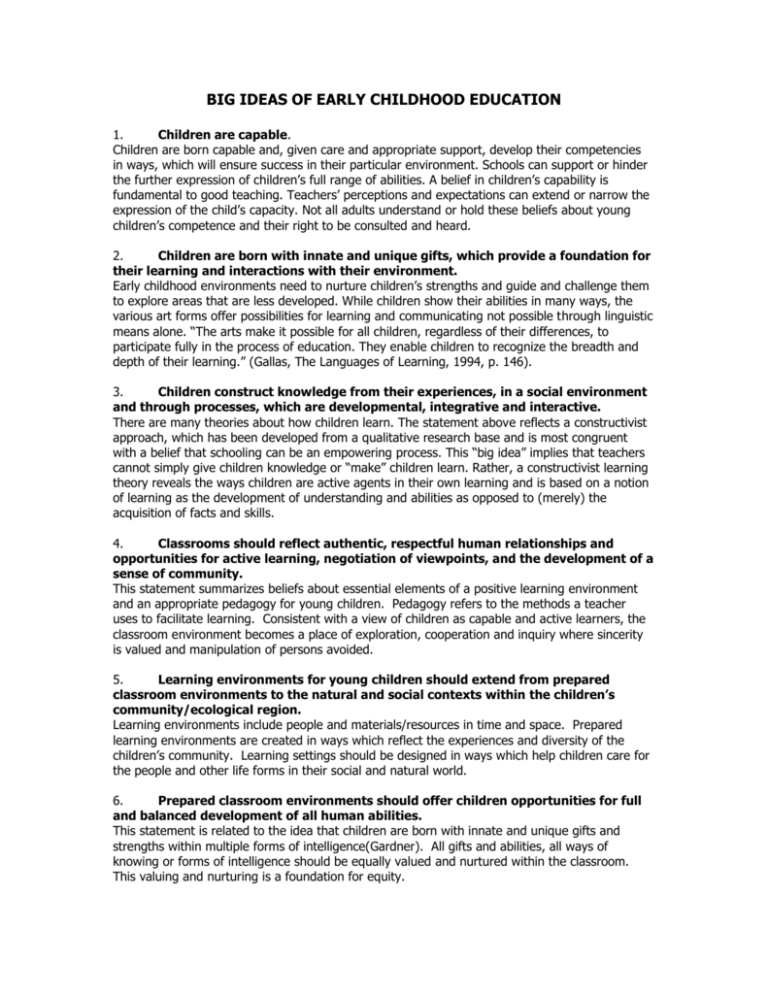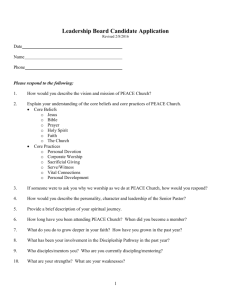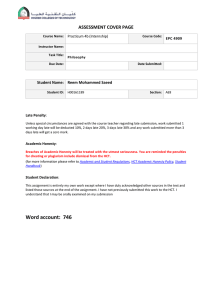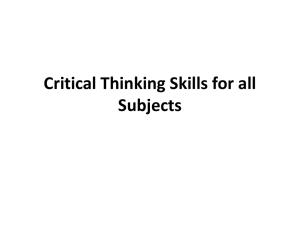BIG IDEAS OF EARLY CHILDHOOD EDUCATION
advertisement

BIG IDEAS OF EARLY CHILDHOOD EDUCATION 1. Children are capable. Children are born capable and, given care and appropriate support, develop their competencies in ways, which will ensure success in their particular environment. Schools can support or hinder the further expression of children’s full range of abilities. A belief in children’s capability is fundamental to good teaching. Teachers’ perceptions and expectations can extend or narrow the expression of the child’s capacity. Not all adults understand or hold these beliefs about young children’s competence and their right to be consulted and heard. 2. Children are born with innate and unique gifts, which provide a foundation for their learning and interactions with their environment. Early childhood environments need to nurture children’s strengths and guide and challenge them to explore areas that are less developed. While children show their abilities in many ways, the various art forms offer possibilities for learning and communicating not possible through linguistic means alone. “The arts make it possible for all children, regardless of their differences, to participate fully in the process of education. They enable children to recognize the breadth and depth of their learning.” (Gallas, The Languages of Learning, 1994, p. 146). 3. Children construct knowledge from their experiences, in a social environment and through processes, which are developmental, integrative and interactive. There are many theories about how children learn. The statement above reflects a constructivist approach, which has been developed from a qualitative research base and is most congruent with a belief that schooling can be an empowering process. This “big idea” implies that teachers cannot simply give children knowledge or “make” children learn. Rather, a constructivist learning theory reveals the ways children are active agents in their own learning and is based on a notion of learning as the development of understanding and abilities as opposed to (merely) the acquisition of facts and skills. 4. Classrooms should reflect authentic, respectful human relationships and opportunities for active learning, negotiation of viewpoints, and the development of a sense of community. This statement summarizes beliefs about essential elements of a positive learning environment and an appropriate pedagogy for young children. Pedagogy refers to the methods a teacher uses to facilitate learning. Consistent with a view of children as capable and active learners, the classroom environment becomes a place of exploration, cooperation and inquiry where sincerity is valued and manipulation of persons avoided. 5. Learning environments for young children should extend from prepared classroom environments to the natural and social contexts within the children’s community/ecological region. Learning environments include people and materials/resources in time and space. Prepared learning environments are created in ways which reflect the experiences and diversity of the children’s community. Learning settings should be designed in ways which help children care for the people and other life forms in their social and natural world. 6. Prepared classroom environments should offer children opportunities for full and balanced development of all human abilities. This statement is related to the idea that children are born with innate and unique gifts and strengths within multiple forms of intelligence(Gardner). All gifts and abilities, all ways of knowing or forms of intelligence should be equally valued and nurtured within the classroom. This valuing and nurturing is a foundation for equity. 7. Societies construct educational and child care practices that reflect the dominant values, attitudes and beliefs of their particular time and place. The beliefs and values which underlie these practices are often contested within contemporary society. Our current definitions of “best practices” have historical, social, ethical and political roots and it is important to increase our awareness of the impact of these factors on our current perceptions, values and beliefs. This also means that schooling practices are not natural and inevitable features of life. “The way things are is not the way things have to be” schools can be sites of resistance to trends which are not in the best interests of all children. 8. The adult is responsible for creating a learning environment that reflects the principles and attitudes of anti-bias curriculum. Anti-bias curriculum is designed to ensure that all children are treated with respect, and learn to appreciate difference. This approach to classroom practice helps to ensure that children grow and develop to their potential in a pluralistic society. 9. Teachers’ practices are a reflection of their beliefs and values. This statement should be self evident and has been discussed in relation to other “big ideas”. The “good teacher” recognizes that she has been produced by a system of ideas and practices. Consequently, there is an inherent ongoing need to critically reflect upon her ideas, values, beliefs and praxis to ensure they are in the best interests of all children.







